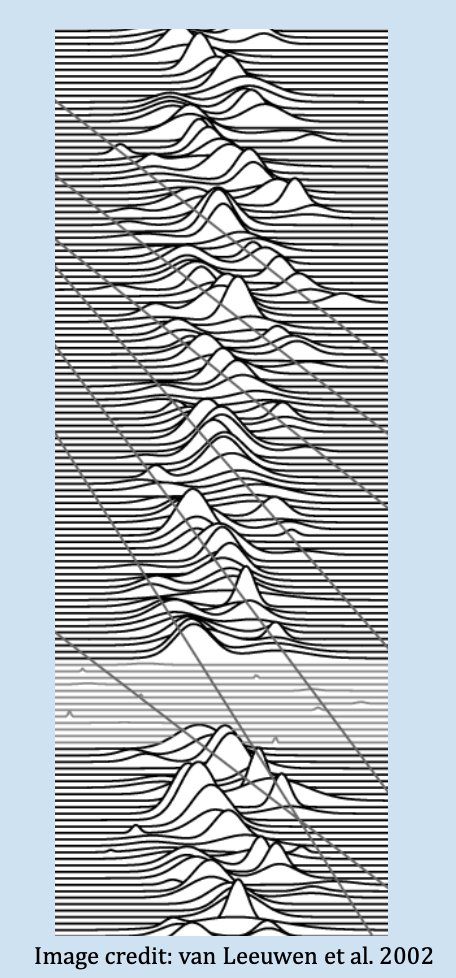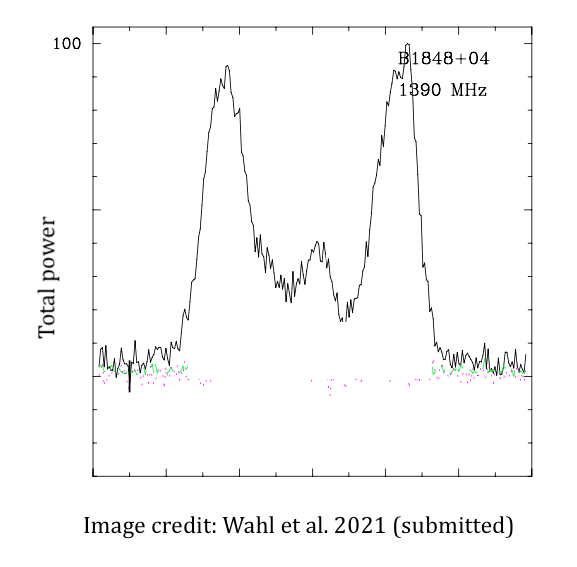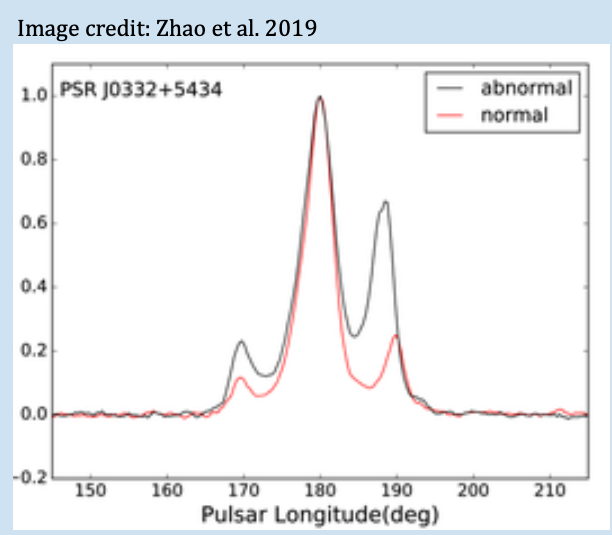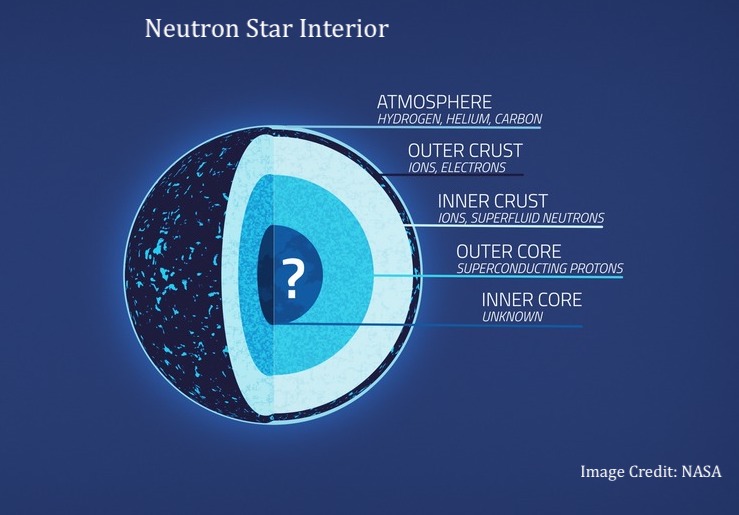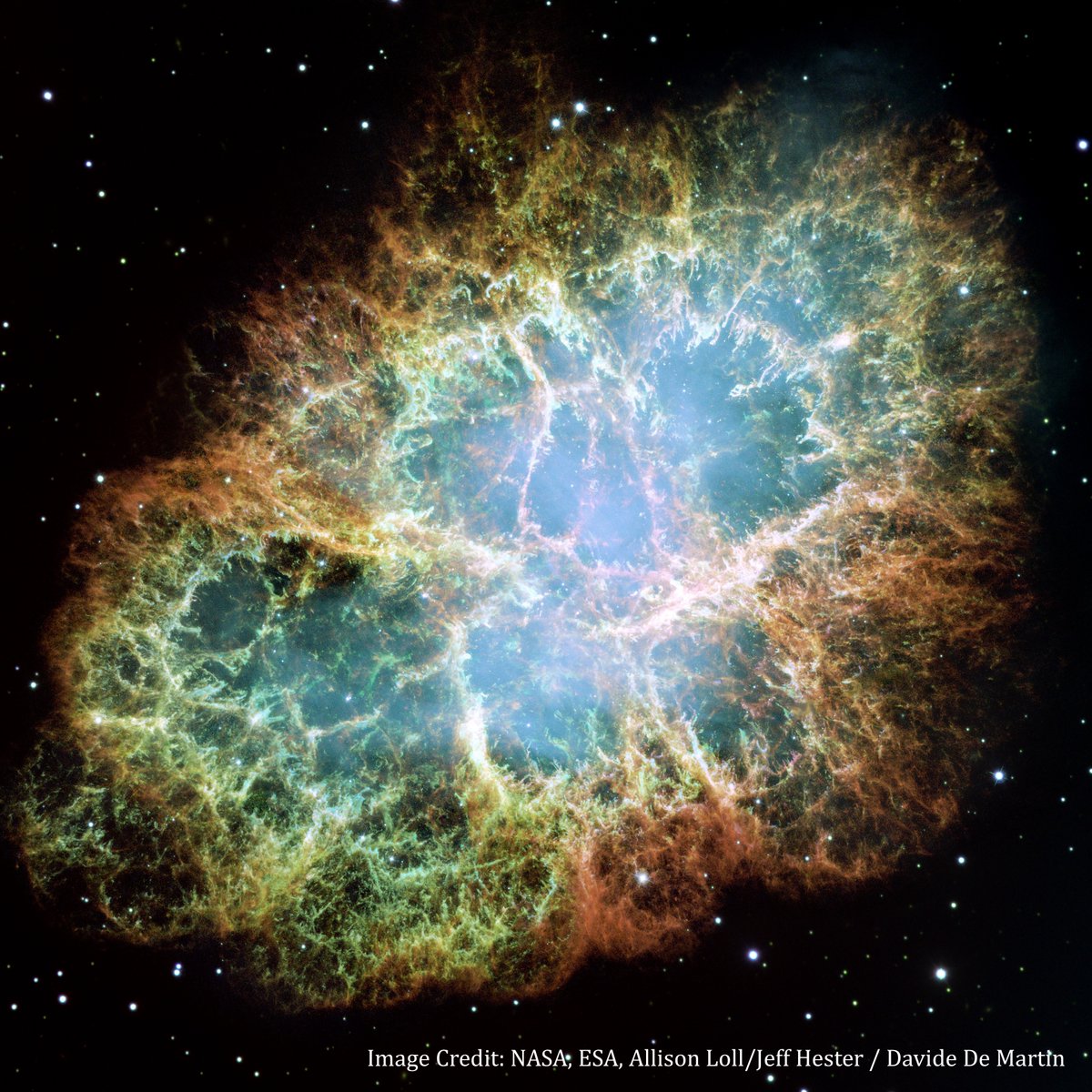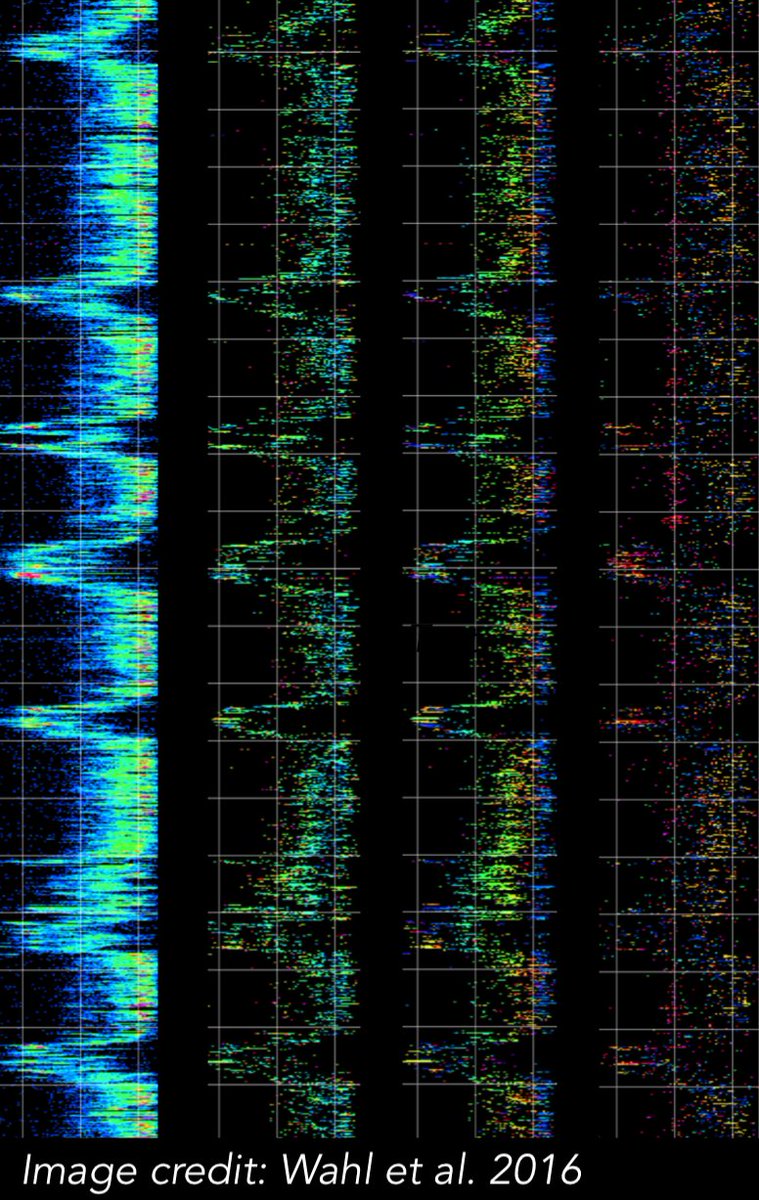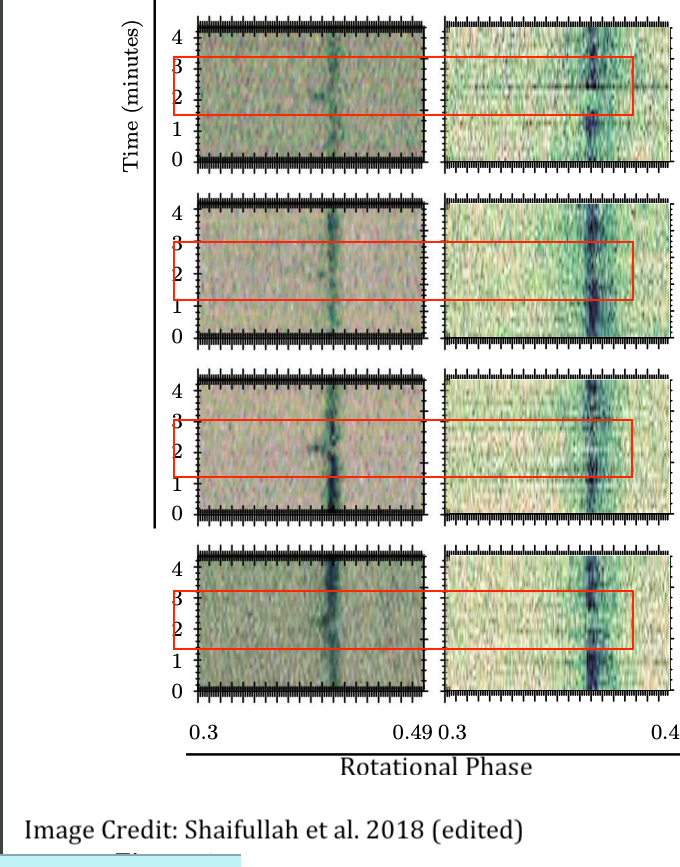One of my favorite things about pulsars is that occasionally they do very weird things. What are these very strange things they do, and why do they happen?
Find out on this edition of #pulsarfriday! https://abs.twimg.com/emoji/v2/... draggable="false" alt="🧵" title="Thread" aria-label="Emoji: Thread">
https://abs.twimg.com/emoji/v2/... draggable="false" alt="🧵" title="Thread" aria-label="Emoji: Thread">
Find out on this edition of #pulsarfriday!
Up first: nulling. Pulsars emit radio waves in a very regular pattern like a lighthouse, but sometimes that lighthouse just turns off, a process known as nulling. Since this phenomenon& #39;s discovery ~1970, more than 200 out of the 2600 radio pulsars have been seen to null.
Some pulsars null for a few pulses and others are "off" for more than 90% of the time!We& #39;re not 100% sure what causes nulling but it& #39;s either due to processes within the pulsar itself (something that affects the emission) or a geometric effect where the pulsar turns away from us.
It may have something to do with the pulsar& #39;s magnetic field characteristics or pulsar age, but more in-depth analyses are needed to determine exactly why these pulsars switch on and off.
Next up: mode changing. As shown below, pulsars each have a characteristic emission shape (“average profile”), which is different for every pulsar (the shape depends on the pulsar beam). Most of the time that shape is very stable, but sometimes it will completely change.
This is called mode changing, where the pulsar exhibits a different emission mode. The pulsar can change to a different mode for just a few pulses at a time or can be in its other mode for almost half the time we see it!
We’re not exactly sure why this happens either, but know that it represents a fundamental change in the emission process and could be a result of changes in the magnetosphere and/or surface conditions.
The next phenomena I’ll cover it glitching! Pulsars rotate very regularly but occasionally a pulsar will suddenly spin much faster for a period of time and then slowly returns to a rotation period close to the pre-glitch period.
Anti-glitches, where the pulsar slows down instead of speeds up for a period of time, can also occur!
Glitches are most likely caused by an imbalance of the rotation of the superfluid interior of the star and the crystalline crust on the outside. More insight into the composition of neutron stars will hopefully get us closer to solving the mystery!
Giant pulses are another strange occurrence in these neutron stars. These are intense bursts of radio emission that are much stronger than the usual emission of the pulsar. These tend to appear in very energetic pulsars.
The most famous giant pulse emitter is the Crab Pulsar! This pulsar was initially detected through its giant pulses and was only observed in giant pulses for 20 years! This pulsar is a favorite of @Natalia42989811 who is trying to solve the mystery behind these giant pulses.
The cause of giant pulses isn’t known but the pulsars that do emit giant pulses tend to have very high magnetic fields at the light cylinder (where something co-rotates the star at the speed of light) so it almost definitely has something to do with the emission process!
The final weird phenomenon I’ll cover (a personal favorite) is pulsar swooshes! Usually pulses occur very regularly, but the pulses in two pulsars are seen to come earlier than expected, stay like that for ~20 pulses, then go back to normal, a phenomenon called swooshing.
This occurs in 2 pulsars, B0919+06 and B1859+07, with some regularity. The swooshes every ~700 pulses in B0919 and every ~150 pulses in B1859+07, lasting for around 10-20 periods each.
These occur at frequencies of 430 MHz and 1500 MHz but at low frequencies, when we see a swoosh, it appears as a null! We have no idea why this is happening but the disappearance at low frequencies points to some kind of emission phenomenon.
I studied swooshes during my undergrad and they’re my favorite mysterious pulsar phenomenon. To read more about swooshes, read this thread: https://twitter.com/hwahl16/status/1296479189999267841?lang=en">https://twitter.com/hwahl16/s...
Thank you so much for exploring weird pulsar phenomena with my today! Feel free to ask any questions you have about these phenomena below.
Join me next week for another edition of #pulsarfriday!
Join me next week for another edition of #pulsarfriday!

 Read on Twitter
Read on Twitter